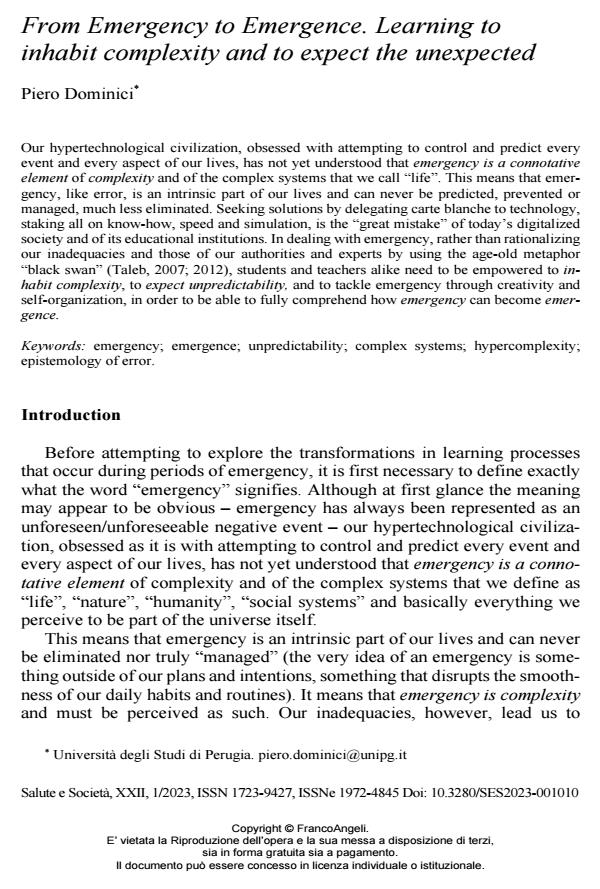From Emergency to Emergence. Learning to inhabit complexity and to expect the unexpected
Journal title SALUTE E SOCIETÀ
Author/s Piero Dominici
Publishing Year 2023 Issue 2023/1
Language English Pages 17 P. 135-151 File size 249 KB
DOI 10.3280/SES2023-001010
DOI is like a bar code for intellectual property: to have more infomation
click here
Below, you can see the article first page
If you want to buy this article in PDF format, you can do it, following the instructions to buy download credits

FrancoAngeli is member of Publishers International Linking Association, Inc (PILA), a not-for-profit association which run the CrossRef service enabling links to and from online scholarly content.
Our hypertechnological civilization, obsessed with attempting to control and predict every event and every aspect of our lives, has not yet understood that emergency is a connotative element of complexity and of the complex systems that we call "life". This means that emer-gency, like error, is an intrinsic part of our lives and can never be predicted, prevented or managed, much less eliminated. Seeking solutions by delegating carte blanche to technology, stak-ing all on know-how, speed and simulation, is the "great mistake" of today’s digitalized society and of its educational institutions. In dealing with emergency, rather than rationalizing our inadequacies and those of our authorities and experts by using the age-old metaphor "black swan" (Taleb, 2007; 2012), students and teachers alike need to be empowered to inhabit complexity, to expect unpredictability, and to tackle emergency through creativity and self-organization, in order to be able to fully comprehend how emergency can become emergence.
Keywords: emergency; emergence; unpredictability; complex systems; hypercomplexity; epis-temology of error.
Piero Dominici, From Emergency to Emergence. Learning to inhabit complexity and to expect the unexpected in "SALUTE E SOCIETÀ" 1/2023, pp 135-151, DOI: 10.3280/SES2023-001010